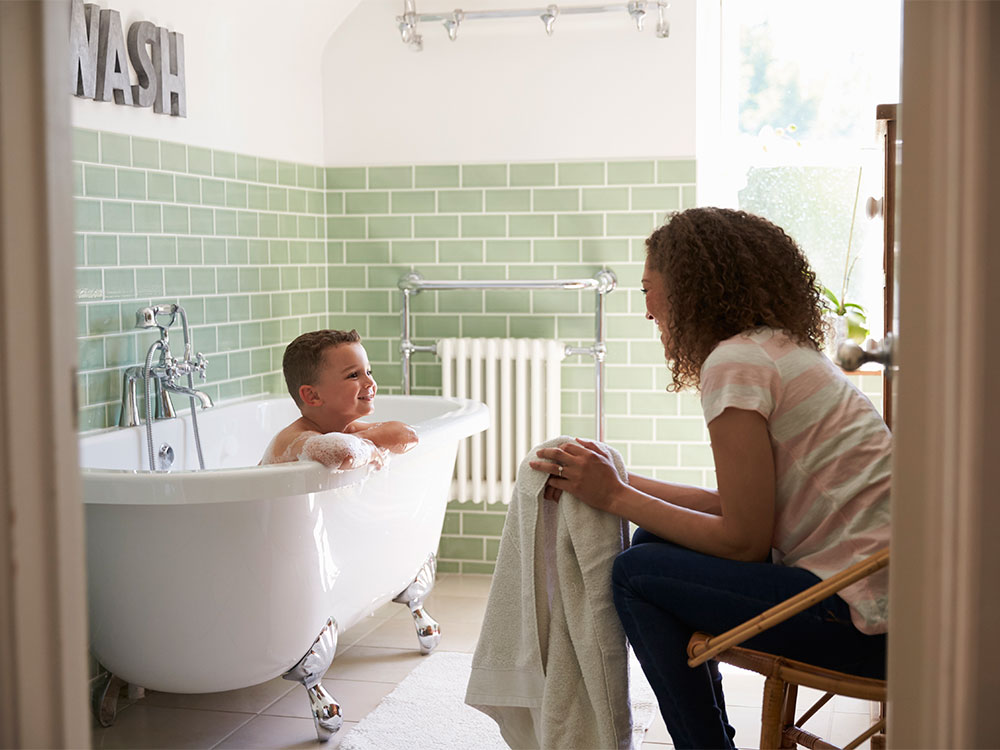
Water Safety is Not just a Summer Subject
Drowning Prevention is a Year-Round Issue
Some safety issues are specific to seasons (depending on where you live). We remind people to wear sunscreen and to stay hydrated during hot, sunny weather. The winter months bring warnings of staying safe in snow and ice. However, water safety is not just a summer subject or only about the pools, lakes, or oceans.
This is particularly important for babies and toddlers who can drown very quickly in less than an inch of water. A toilet, a bathtub, or even a dog bowl can be a source for drowning. When it comes to curious young children, any water body is a safety risk even during non-swimming times. That means water safety is everyone’s responsibility all year when young children are around.
Drownings are a leading cause of injury and death for young children ages one to fourteen, and three children die every day due to drowning. Drowning kills more children ages one to four than anything else except birth defects. The manner of drawing varies by age:
-Babies (Under 12- months of age) most often drown in bathtubs, buckets, and toilets.
-Young children (one to four years of age) are more likely to drown in swimming pools, hot tubs, and spas.
-Older kids, teens, and young adults drown primarily in natural water bodies, such as lakes and rivers.
Year-Round Water Safety Basics
Supervision is rule #1. Kids must be watched whenever they’re around water. This goes for water in a bathtub, a wading pool, an ornamental fish pond, a swimming pool, a spa, a sink, a toilet bowl, buckets, an ocean, or a lake—even small bodies of standing water, such as a ditch filled with rainwater. Even children who know how to swim can be at risk of drowning. All it takes is an accident. A child can slip, lose consciousness, and fall into a fish pond or a rain-filled ditch.
Bathroom Water Safety
Never leave a young child unattended in the bathroom, even for a second! In 2014 there were 67 fatal drownings in bathtubs, 78 percent of which involved children under age 5. Even a child who seems safely propped up can slip down and drown. It can happen in seconds. Bathtubs can also be slippery places. To keep kids safe, put anti-skid strips on the tub’s bottom or use a plastic bath mat that adheres to the tub.
Bathtubs aren’t the only potential water safety hazard in the bathroom. Toilets can easily lure a curious child. To keep young kids safe, install a toilet-lid locking device or doorknob cover, and keep bathroom doors closed at all times to keep young kids safe. Make sure to wipe up any water spills, whether from the tub, sink, or toilet, to prevent falls.
Pool, Pond, Spa, and Hot Tub Water Safety
Vigilance is key! Although fences are not 100 percent child-proof, installing a fence that goes directly around a pool or spa is the best safety investment you can make. Four-sided pool fencing decreases water-related injuries in young children by more than 50 percent.
Outdoor Winter Water Safety
Watch out for thin ice. Drowning can occur in cold weather, too. Avoid walking, skating, or riding on weak or thawing ice. Pay attention to posted warnings regarding ice safety and consult a local recreation department for current ice conditions.
Unintentional drowning can happen at any time of the year. The good news is that’s it’s preventable. Learn more about drowning and prevention programs. We understand that you have a lot on your mind, but children need adults’ undivided attention when they are near or in water.




